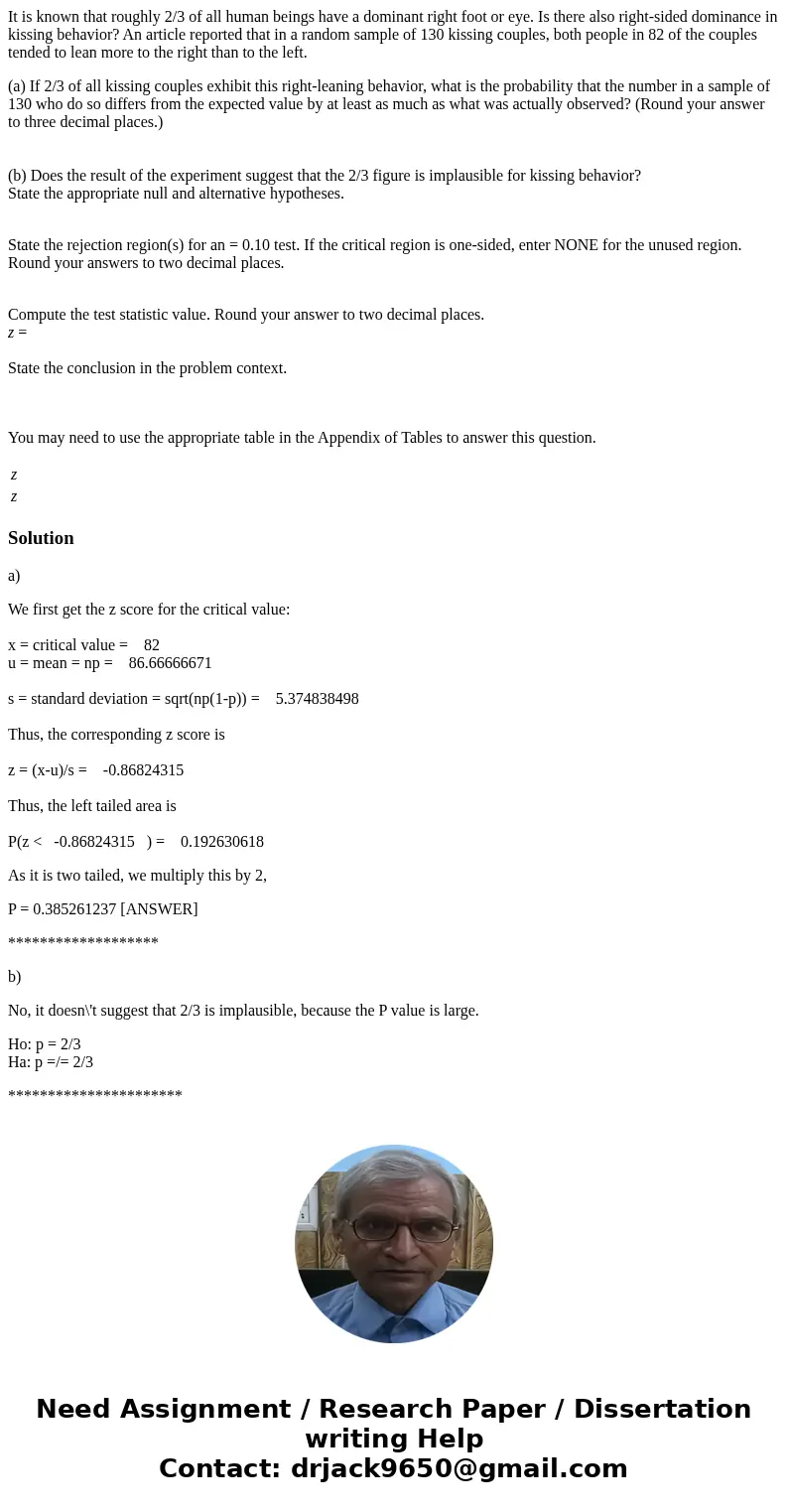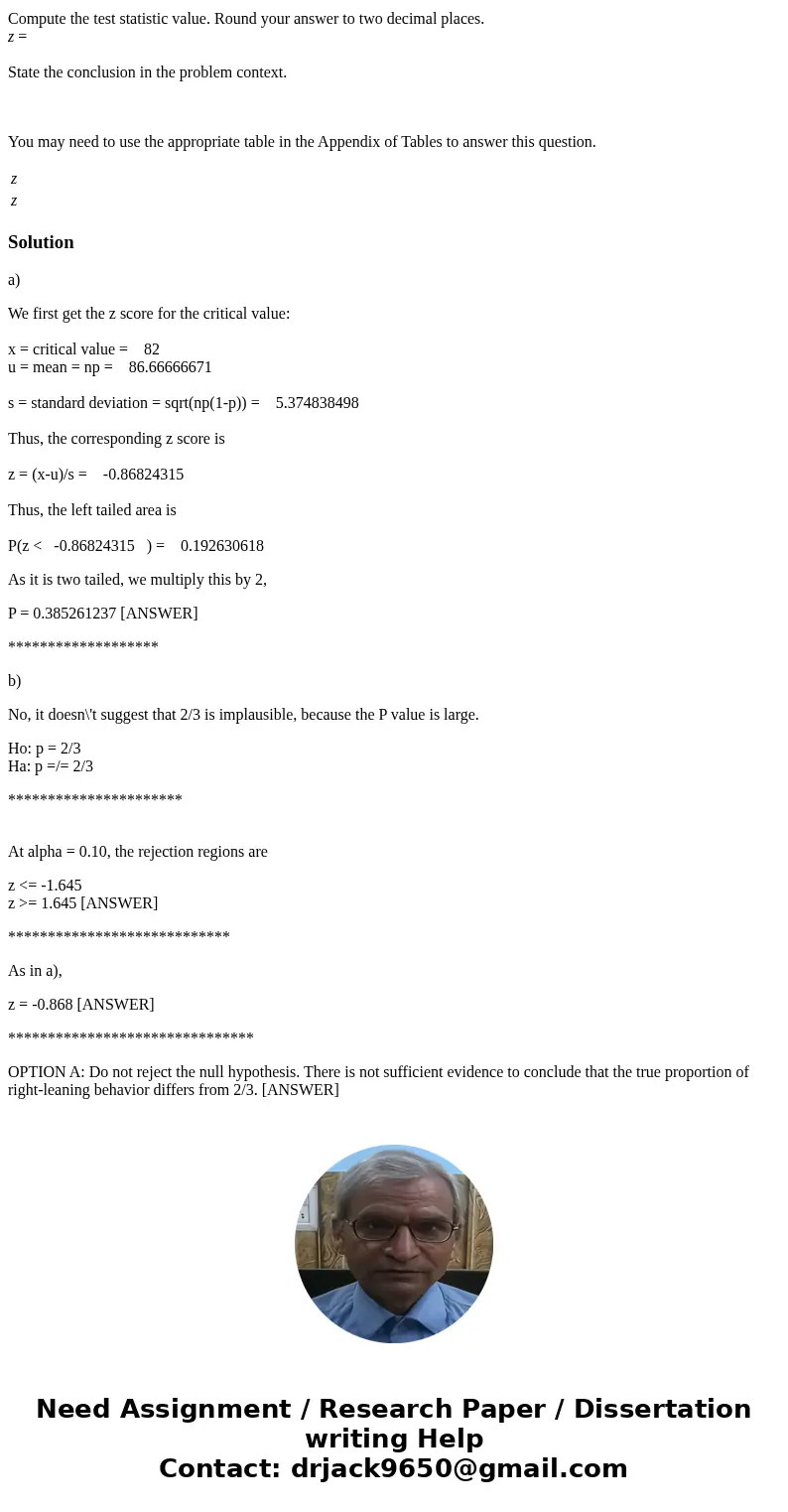It is known that roughly 23 of all human beings have a domin
It is known that roughly 2/3 of all human beings have a dominant right foot or eye. Is there also right-sided dominance in kissing behavior? An article reported that in a random sample of 130 kissing couples, both people in 82 of the couples tended to lean more to the right than to the left.
(a) If 2/3 of all kissing couples exhibit this right-leaning behavior, what is the probability that the number in a sample of 130 who do so differs from the expected value by at least as much as what was actually observed? (Round your answer to three decimal places.)
(b) Does the result of the experiment suggest that the 2/3 figure is implausible for kissing behavior?
State the appropriate null and alternative hypotheses.
State the rejection region(s) for an = 0.10 test. If the critical region is one-sided, enter NONE for the unused region. Round your answers to two decimal places.
Compute the test statistic value. Round your answer to two decimal places.
z =
State the conclusion in the problem context.
You may need to use the appropriate table in the Appendix of Tables to answer this question.
| z | |
| z |
Solution
a)
We first get the z score for the critical value:
x = critical value = 82
u = mean = np = 86.66666671
s = standard deviation = sqrt(np(1-p)) = 5.374838498
Thus, the corresponding z score is
z = (x-u)/s = -0.86824315
Thus, the left tailed area is
P(z < -0.86824315 ) = 0.192630618
As it is two tailed, we multiply this by 2,
P = 0.385261237 [ANSWER]
*******************
b)
No, it doesn\'t suggest that 2/3 is implausible, because the P value is large.
Ho: p = 2/3
Ha: p =/= 2/3
**********************
At alpha = 0.10, the rejection regions are
z <= -1.645
z >= 1.645 [ANSWER]
****************************
As in a),
z = -0.868 [ANSWER]
*******************************
OPTION A: Do not reject the null hypothesis. There is not sufficient evidence to conclude that the true proportion of right-leaning behavior differs from 2/3. [ANSWER]


 Homework Sourse
Homework Sourse